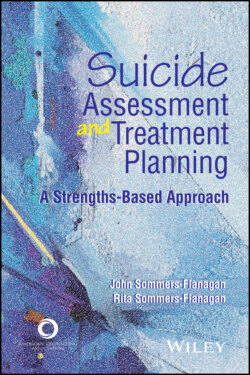Читать книгу Suicide Assessment and Treatment Planning - John Sommers-Flanagan - Страница 51
Competency 9: Know the Law Concerning Suicide
ОглавлениеThe laws concerning suicide are simple and complex. The simple part follows court rulings on the duty to protect clients from knowable dangers from self and others (Tarasoff v. Regents of the University of California, 1976). The duty to protect is a legal mandate.
In addition to knowing federal guidelines regarding suicide and the law, you also need to know laws and statutes in your specific locality. Jobes and O’Connor (2009) wrote, “All states . . . have explicit expectations of a duty to protect . . . when [clients] pose an imminent danger to self” (p. 165). The state in which you practice has legal statutes covering the involuntary civil commitment process and standards of care for working with clients or minors who are suicidal. Consulting with experienced professionals in your region (and/or seeking training) can help you understand the practical steps you need to cover in your locality.
If you are employed by an agency or school, you will need to know its suicide policy. When you join a new agency or school, read the institution’s suicide-related policies and procedures and discuss them with a senior clinician or administrative staff before you even begin seeing clients or students. If your agency or school does not have suicide-related policies and procedures, work with your administration to adopt a temporary working model from a similar agency, and establish a task force to create a more permanent model. You never know when the next client or student will be suicidal. On the first week of his first job, one of our graduates had to manage a student who was actively suicidal. He called and said, “Wow! You guys weren’t kidding when you said to know how to handle things before you even open the door!” (see Wheeler & Bertram, 2019, for more information on legal issues in counseling).
